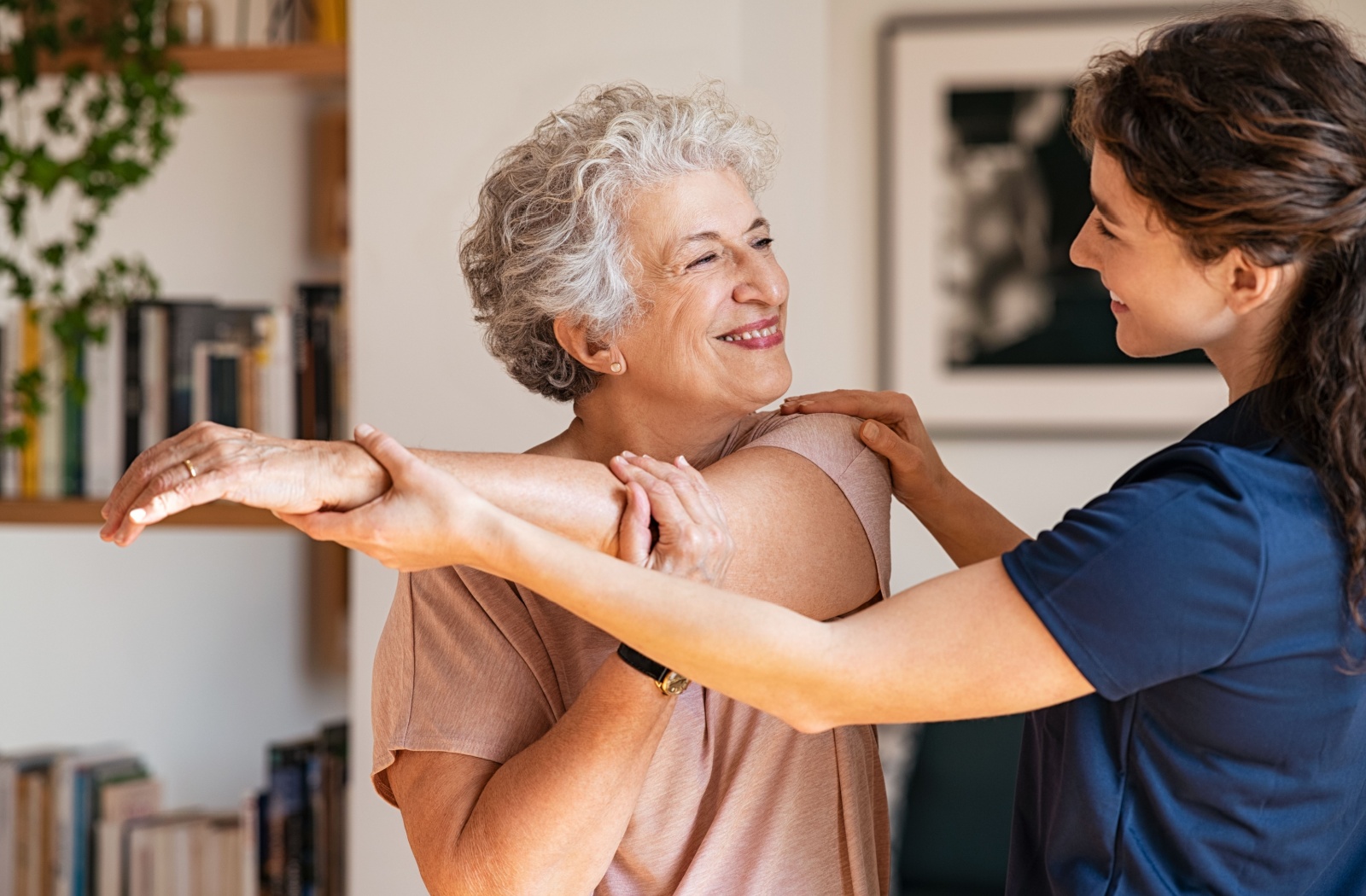Physical exercise is one of the best tools for older adults. It’s a chance to maintain health and independence with age, and that’s a valuable thing. Staying active offers significant benefits to seniors, and it’s closely linked to a higher quality of life.
However, while exercise is valuable at every age, certain activities can be risky for seniors. That’s why it’s necessary to choose the right types of exercises. Knowing what to do—and what to avoid—is the key to exercising safely.
The Importance of Staying Active as You Age
Regular physical activity is more important than most people think. It’s a way to work towards a healthier body and mind. It offers significant benefits to older adults:
- Maintaining mobility and flexibility
- Reducing the risk of chronic diseases
- Improving balance and coordination to prevent falls
- Boosting mental health and reducing symptoms of anxiety or depression
- Enhancing overall energy levels and quality of life
These are all key to quality of life. With regular exercise, older adults can improve their physical health. However, safety should always be key when it comes to an exercise routine. If you’re ever unsure of where to begin, it helps to work with an experienced healthcare professional.
How Much Exercise Do Seniors Need?
A proper routine makes a big difference. The CDC recommends these guidelines:
- Perform at least 150 minutes of moderate-intensity aerobic activity, such as brisk walking or cycling, every week.
- Or, 75 minutes of vigorous aerobic activity, like swimming or jogging, can be performed once a week.
- Perform muscle-strengthening activities 2 or more days a week to preserve strength.
- Perform balance exercises 1-2 times a week to build and maintain muscles.
These guidelines can be adjusted depending on personal health conditions and mobility.
Exercises That Seniors Should Avoid
While fitness is a priority, some activities can pose risks for aging bodies. Seniors should steer clear of exercises that could cause undue strain or heighten injury risks.
High-Impact Aerobics
Jump-heavy exercises, such as jumping jacks or step aerobics, strain aging joints. Without proper care, this quickly increases the risk of pain or joint damage. Instead, older adults should aim for low-impact activities with a lower risk of harm.
Heavy Weightlifting
Lifting excessive weights may overwork the joints and muscles. For older adults just beginning an exercise routine, this can injure joints and limbs. Instead of aiming for larger weights, use lighter weights with more repetition to avoid strain.
Long-Distance Running
Running long distances can place significant stress on the knees and hips. This can be painful, especially if a person is already dealing with wear and tear. Instead, substitute walking to reduce the risk of injury.
High-Intensity Interval Training (HIIT)
High-intensity interval training is a fast way to burn calories and build muscle. However, it can also put a lot of stress on the body if not done properly. To avoid injury, make sure to have proper form and gradually increase intensity over time.
Sit-Ups & Crunches
Core exercises like sit-ups and crunches can strain the neck and spine, potentially leading to injury. Seniors should opt for less taxing movements like planks or leg lifts to strengthen their core.
Rock Climbing or Bouldering
This adventurous workout isn’t ideal for seniors. Due to the high risk of falls and the physical demands required, rock climbing can be extremely risky.

Senior-Friendly Exercises
Fortunately, there are plenty of safe and enjoyable ways for seniors to stay fit. Choosing low-impact activities can keep you healthy without unnecessary risks.
Walking
Walking is simple, safe, and good for your health. It can improve joint health, boost cardiovascular fitness, and can be done almost anywhere. Even though this low-impact activity is slow and steady, walking offers plenty of benefits to older adults.
Swimming & Water-Based Exercises
Swimming and water aerobics are excellent low-impact options. Because water takes weight off the joints, it’s particularly ideal when a person deals with everyday discomfort. The water also adds resistance to the workout, which makes swimming excellent for improving physical health.
Chair Yoga
Chair yoga provides a modified way to exercise. For older adults with mobility problems, chair yoga offers a new chance to stretch, build strength, and improve balance. It’s a great way for seniors to enjoy the mental and physical benefits of yoga safely.
Resistance Band Workouts
Using resistance bands is a safe way to build and maintain muscles. These lightweight tools offer flexibility in movement and are easier on the joints compared to heavy lifting.
Staying Healthy Has Never Been Easier
Staying active doesn’t have to feel overwhelming or risky. By avoiding dangerous workouts and focusing on senior-friendly exercises, you can maintain your health, mobility, and independence. And don’t worry—our team at The Terrace at Chestnut Hill is here to help.
Our community is happy to offer access to fitness classes, programs, and more. We even offer beautiful outdoor areas, perfect for walks in nature, and physical therapy programs to keep residents safe while exercising. Schedule a tour with our community today!









